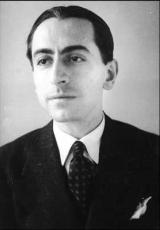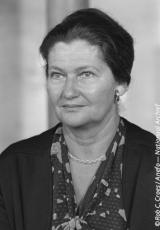Passing on and educating
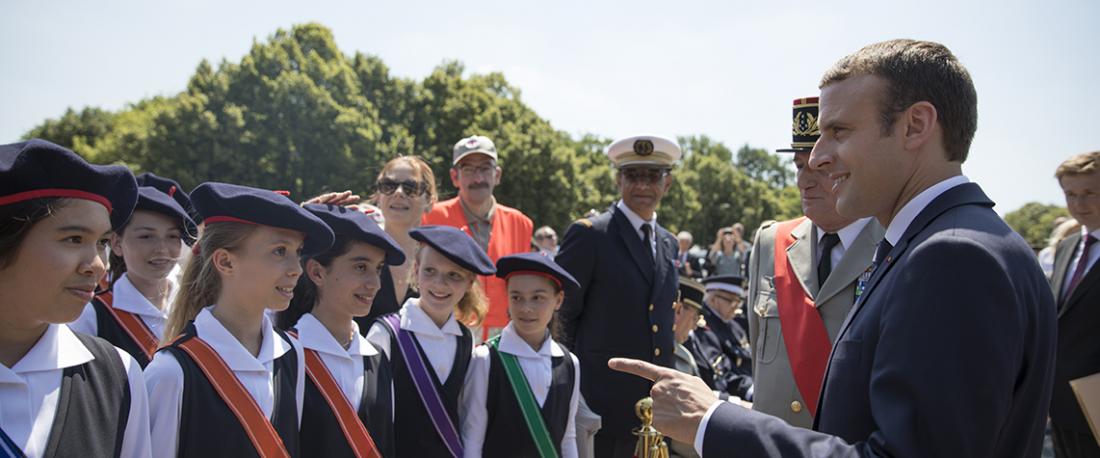
Identified today as the “public priority” of commemorations, young people are provided by their teachers with the keys to understanding remembered history and a means of renewing the mode and act of commemoration. The educational role of commemoration thus involves a shift from the duty of remembrance to the task of remembrance.
The increase in the number of national commemorations over the last 30 years (from four to 11 days) raises a number of questions about our society’s relationship with the past, the present and the future. It is, in any case, a sign of the political recognition of a diversification of historical experiences and the meanings to be given to them collectively.
A social and political function
Until the 1980s, national commemorations celebrated the political (Bastille Day) or military victories (Joan of Arc Day, Armistice Day, VE Day) which founded the nation or ensured its continued existence. Beyond the event being commemorated, the annual repetition of these rituals was intended to forge bonds of national belonging between socially and culturally different individuals who did not know one another but whom this rite was supposed to imbue with a sense of a shared past and shared destiny. Indeed, commemorative practice is never just about remembering the past. It situates the individual and social group in time, reinterpreting the past event with a focus on the future.
Here, we find the forward-looking aspect of remembrance, which creates scenarios for a time that has yet to come. The social and political function of the Armistice Day (11 November) and VE Day (8 May) commemorations was to establish the continuity of the republican nation which had been in mortal danger on two occasions, by focusing on its victory, and hence its survival. They also fed into other collective projects narrativised by speeches given at the ceremonies, such as pacifism (Armistice Day) and the fight against fascism (VE Day).
Young winners of the “Concours National de la Résistance et de la Déportation” schools competition take part in the relighting of the flame of the Unknown Soldier, 21 January 2019.
© Jacques Robert / SGA/COM
The principle of indebtedness
The second function of the commemorative act concerns a process of indebtedness of the current generation towards those who are no longer with us and/or those who made our presence in the world possible. The expressions “in honour of”, “in memory of” and “who died for France” situate in language this inter-individual aspect that creates a relationship of obligation between two people or from one group towards another across the generations. Commemoration is thus an act of personification, whereby individuals, by evoking those absent, make them reappear, in order to honour their debt towards them. First World War veterans and Second World War Resistance fighters, for instance, have been the subject of commemorations of their fight and sacrifice against the enemy, to secure victory and as a result the survival and perpetuation of the individuals comprising the national group.
This commemorative model based on the debt towards those who gave their lives for the survival of the nation began to change in the 1990s. While it did not disappear completely, another model was introduced alongside it. With the introduction of commemorations of the Vel’ d’Hiv’ roundup in July (1993), the Harkis on 25 September (2003), slavery on 10 May (2006), victims of the Algerian War on 19 March (2012) and, most recently, the planned commemoration of the terrorist attacks (chosen date 11 March), the commemorative economy has undergone a profound change. A decentring is under way, from the nation to human rights as the reference subject. The principle of indebtedness is shifting from the combatant heroes to the victims who were subjected to extreme violence. The continuity of the life of the nation and the bonds to be forged between individuals across the generations is being remodelled with these new rituals, through the atonement owed to victims and their integration into national society. The life of the nation is no longer perpetuated organically by remembering the victories and honouring the combatants who made them possible, but by incorporating different elements of the national group, who are the victims of history. Recognition of the traumatic experiences of communities structures to a large extent these new commemorative rituals, which themselves have the symbolic value of atonement towards the victims.
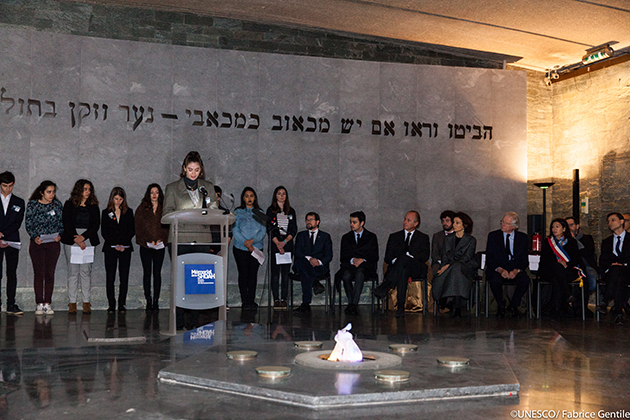
Young people take part in the Day of Remembrance of Genocides and Prevention of Crimes against Humanity, at the Shoah Memorial, 27 January 2019. © UNESCO/Fabrice Gentile
Educating young people
The collective projects that accompany and legitimate these commemorative acts set as their horizon of expectation a preventive function of the past: remembering barbarity so as to be better equipped to prevent it from being repeated. Schoolchildren are the primary recipients of this preventive commemorative policy, since passing on the memory of crimes is seen as one of the best antidotes for young people to receive as part of their education.
This passing on of memory to school students occurs mainly through national or international commemorative days, such as the Day of Remembrance of Genocides and Prevention of Crimes against Humanity, held on 27 January in Paris every year since 2002. These remembrance days are treated as an ideal opportunity to teach citizenship education based on promoting tolerance, community spirit and democracy, and fighting racism, antisemitism and Holocaust denial. There is a very real risk, then, of producing a normative injunction on students, with no other effect than to assign importance to not forgetting. The nationalistic or compassionate moral catechism is at times rooted in the best intentions of educational and political leaders. As a result, there arose the need to dissociate these commemorations from the duty of remembrance, in order to reinterpret them as a “task of remembrance” (travail de mémoire), to use the concept of philosopher Paul Ricoeur. But, semantics aside, what does that actually mean?
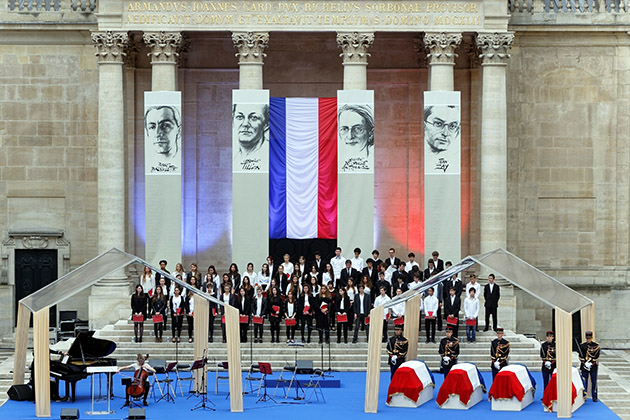
School pupils take part in the ceremony of admission to the Pantheon of Germaine Tillion, Geneviève de Gaulle-Anthonioz, Pierre Brossolette and Jean Zay, 27 May 2015. © Philippe Devernay
From the duty of remembrance to the task of remembrance
School commemorations must fulfil a cognitive function. They are an opportunity to produce historical knowledge, highlighting for students any divergences from the world around them. In recalling the past, commemoration sheds light on its strangeness, while rejecting any anachronism or hasty judgment about historical events or the individuals featured in them. The act of remembering is an invitation to travel back in time, leave behind one’s familiar environment, break free from the landmarks of the present and form ties with a foreign place that is in our heritage.
But this act of remembering the past concerns us in our present lives, too, through what it provides us with in terms of resources. Historia magistra vitae, as the ancients said. By narrativising situations, acts and characters – male and female – who worked for the common good, the summoned past establishes a connection with the current generation, with others, with the world, that is a source of collective progress. The exemplarity which the past offers us educates in the sense that it allows students individual and social identifications that verticalise them, by presenting the courage, truth, solidarity, commitment and fighting spirit shown by individuals throughout history as emancipatory values. Here we reach the limits of the exclusively preventive vision of the past referred to previously, a past concerned solely with crimes that must not be repeated. In this regard, let us recall the original educational and remembrance function of the Pantheon at the French Revolution: to admit men and women who, through their actions, had brought about progress in the life of the nation. That was also the reason for the admission to the Pantheon of Geneviève de Gaulle-Anthonioz, Germaine Tillion, Jean Zay and Pierre Brossolette in May 2015, and Simone Veil in July 2018.
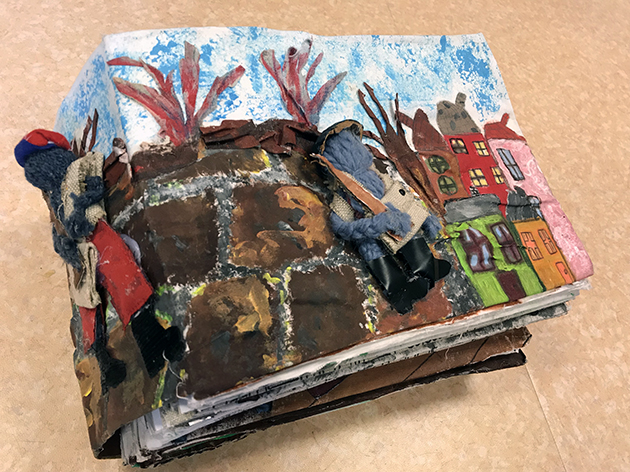
Example of a project by pupils of Jean Zay elementary school in Croix (Nord), in the “Les Petits Artistes de la Mémoire” competition (awarded an artistic mention). © Laura Garnier/ONACVG
Understanding where we come from
Commemoration in the school setting should also encourage historical practice: the research of sources by students (accounts, objects, places) and their usefulness to our knowledge of the past. In this regard, the First World War Centenary was an educational high point which, in many locations, gave rise to projects and topic work that enriched students’ knowledge.
Finally, commemoration has a temporal function. It makes for chronological depth, through the study of how an event has been remembered or forgotten over time. How was 11 November commemorated throughout the 20th century? Since when, with whom and why is the Vel’ d’Hiv’ roundup commemorated? What is the significance of 19 March, a national commemoration since 2012, and what have its remembrance issues been since the end of the Algerian War? Why did people question the national commemoration of the 150th anniversary of the abolition of slavery in 1998 and undertake to commemorate slavery and the slave trade? The task of remembrance at school therefore also concerns the development and transformation of the relationship of individuals and society with the event. It encourages students to think about the future of a historical event not as a natural, irremediable fact, but as a necessarily contingent social construct. In this sense, commemorative practice offers an opportunity to pass on a non-linear view of history to students. This task is invaluable in inserting some distance into the act of commemorating and preventing the past from being overwritten by moral and political injunctions of a compassionate or nationalistic nature.
What is therefore also at stake from an educational standpoint in commemorations – in addition to the exemplarity of the past as a collective resource for the present and future – is learning about the distant past and the uncertain movement of time. Commemorating thus gives students the opportunity to become a part of a national, historical, temporal lineage.


